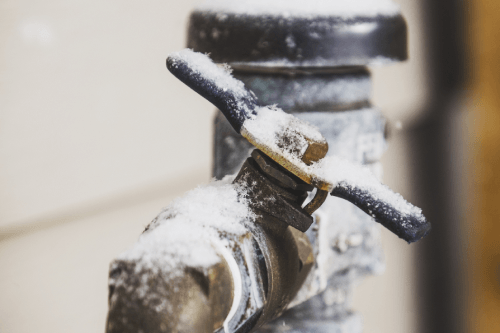Just about everyone maintains their private rationale on the subject of Winter Plumbing Precautions: Preventing Frozen Pipes.

Cold weather can wreak havoc on your plumbing, specifically by freezing pipelines. Below's how to prevent it from happening and what to do if it does.
Introduction
As temperature levels decrease, the threat of icy pipes increases, possibly bring about costly repairs and water damages. Comprehending how to stop frozen pipes is crucial for home owners in chilly climates.
Avoidance Tips
Protecting vulnerable pipelines
Cover pipes in insulation sleeves or make use of heat tape to safeguard them from freezing temperatures. Concentrate on pipes in unheated or exterior areas of the home.
Heating strategies
Maintain indoor rooms properly heated, particularly locations with pipes. Open up cupboard doors to enable warm air to distribute around pipes under sinks.
How to identify frozen pipelines
Seek lowered water flow from taps, unusual odors or sounds from pipelines, and visible frost on exposed pipelines.
Long-Term Solutions
Architectural changes
Think about rerouting pipes far from exterior walls or unheated locations. Add extra insulation to attic rooms, cellars, and crawl spaces.
Upgrading insulation
Buy top quality insulation for pipes, attics, and wall surfaces. Correct insulation aids maintain regular temperatures and minimizes the risk of frozen pipelines.
Safeguarding Outside Plumbing
Garden hoses and outside faucets
Detach and drain yard hoses prior to winter. Mount frost-proof faucets or cover exterior faucets with shielded caps.
Comprehending Icy Pipes
What creates pipelines to freeze?
Pipes freeze when exposed to temperature levels listed below 32 ° F (0 ° C) for extended periods. As water inside the pipelines ices up, it increases, putting pressure on the pipe wall surfaces and possibly creating them to burst.
Risks and damages
Frozen pipes can cause supply of water interruptions, home damages, and costly repair services. Burst pipes can flooding homes and create considerable architectural damage.
Indications of Frozen Pipeline
Identifying icy pipes early can prevent them from breaking.
What to Do If Your Pipes Freeze
Immediate activities to take
If you believe frozen pipes, maintain taps open to soothe stress as the ice melts. Utilize a hairdryer or towels taken in warm water to thaw pipes gradually.
Final thought
Protecting against frozen pipes requires positive procedures and fast actions. By comprehending the causes, indicators, and preventive measures, property owners can protect their plumbing throughout winter.
5 Ways to Prevent Frozen Pipes
Drain Outdoor Faucets and Disconnect Hoses
First, close the shut-off valve that controls the flow of water in the pipe to your outdoor faucet. Then, head outside to disconnect and drain your hose and open the outdoor faucet to allow the water to completely drain out of the line. Turn off the faucet when done. Finally, head back to the shut-off valve and drain the remaining water inside the pipe into a bucket or container. Additionally, if you have a home irrigation system, you should consider hiring an expert to clear the system of water each year.
Insulate Pipes
One of the best and most cost-effective methods for preventing frozen water pipes is to wrap your pipes with insulation. This is especially important for areas in your home that aren’t exposed to heat, such as an attic. We suggest using foam sleeves, which can typically be found at your local hardware store.
Keep Heat Running at 65
Your pipes are located inside your walls, and the temperature there is much colder than the rest of the house. To prevent your pipes from freezing, The Insurance Information Institute suggests that you keep your home heated to at least 65 degrees, even when traveling. You may want to invest in smart devices that can keep an eye on the temperature in your home while you’re away.
Leave Water Dripping
Moving water — even a small trickle — can prevent ice from forming inside your pipes. When freezing temps are imminent, start a drip of water from all faucets that serve exposed pipes. Leaving a few faucets running will also help relieve pressure inside the pipes and help prevent a rupture if the water inside freezes.
Open Cupboard Doors
Warm your kitchen and bathroom pipes by opening cupboards and vanities. You should also leave your interior doors ajar to help warm air circulate evenly throughout your home.

I discovered that blog entry on Preventing and dealing with frozen pipes when exploring the internet. Don't hesitate to pause to share this content if you enjoyed it. Thanks a bunch for your time. Revisit us soon.
Request Free Estimate